Mexican family traditions are colorful and meaningful, shaped by centuries of history, cultural beliefs, and strong values. At their core, these customs show just how important family is in Mexican society. Family traditions in Mexico go far beyond routines-they influence daily life, meals, big celebrations, and ceremonies marking key events. These practices keep families close and unite them with a shared identity, tying together generations.
The main idea in Mexican family life is “familismo,” which means putting family first, being loyal, supporting each other, and making decisions as a group. Family includes not just parents and children, but also grandparents, aunts, uncles, cousins, and sometimes close family friends. This big network gives people security and help, especially during tough times, and explains why family matters so much in Mexican culture.

What Are Mexican Family Traditions?
Mexican family traditions are a blend of old and new customs passed from one generation to the next. Typical features include respect for elders, togetherness, and a love for celebrating life’s special moments. These traditions reflect Mexico’s mix of Indigenous roots, Spanish influences, and changes in society. They shape how people see themselves and help families feel united, forming a beautiful mix of beliefs and habits.
Mexican traditions are known around the world thanks to their lively music, dancing, delicious food, and colorful fireworks at parties. These customs are part of a living story, combining old wisdom with new possibilities, always making family the center of love and support.
Why Is Family So Important in Mexican Culture?
For most Mexicans, family comes before anything else. This strong focus on family is tied to beliefs that family cannot be split apart. The family gives a person their main sense of who they are, offers community, and provides help when needed. People are expected to put family first, even when it’s hard. This close connection acts as a safety net, especially for those who don’t have much, as they lean on relatives during problems.
Many social activities in Mexico happen with family. Relatives of different ages spend lots of time together, like cousins at parties or grandparents at birthdays. These times together keep families close and make family support a normal part of daily life.
The Influence of History and Heritage
Mexican family values began with ancient societies like the Aztecs and Mayans, where family included all relatives and people in the community. Older family members were highly honored as the main sources of stories and traditions. Families often followed a male line, with the father or grandfather being the leader and guiding religious events. When the Spanish arrived, they brought Catholic ideas, but didn’t change family structure much. Over time, Catholicism blended with Indigenous customs, making today’s Mexican family traditions a mix of both, showing that they can adjust while still keeping their roots.
Family Structure and Roles in Mexico
Mexican families are usually tightly connected, often with several generations living together or nearby. Unlike in many Western countries where nuclear families are common, in Mexico, extended families are very important. Grandparents, children, parents, and other relatives often live or see each other frequently. This leads to sharing experiences, resources, and emotional support daily.
Each family member often has a special role. Though these roles are based on tradition, they keep changing as society changes. Understanding these roles helps explain why Mexican families are so close and organized.
Traditional Compared to Modern Family Life
In the past, Mexican families mostly followed a system where the father was the main decision-maker, and the mother took care of the home and kids. Men were seen as providers; women as caring and selfless, following the example of the Virgin Mary. Couples often had many children, matching Catholic beliefs.
Today, especially in cities, more couples have smaller families and often both parents work. Women are going to school and joining the workforce more than before, and both husbands and wives may share chores and make decisions together. Still, the idea that family is the center of life remains strong, even as roles shift.
Living with Multiple Generations
It’s common for grandparents, parents, children, and sometimes siblings and their families to live in the same home or nearby, especially in cities because of money issues. Elders are respected as the keepers of family stories and help take care of children. This living arrangement leads to less privacy but keeps the family support system active, with regular gatherings like Sunday meals where everyone comes together.

Traditional Roles of Fathers, Mothers, and Children
Usually, the father (or jefe de familia) led the family, earning money and making decisions. The mother managed the household, cooked, cleaned, and cared for the children, teaching daughters these skills. Children grew up learning to respect and support their parents and siblings. Older children often helped take care of younger ones. Now, it’s more common for both parents to work, share chores, and make decisions, and fathers are more involved in raising children, though the mother’s caring role is still valued.
Changing Gender Roles
Traditionally, men were seen as strong and independent, while women were expected to put family first and handle all things at home. Some old customs, like adult sons returning home for meals, still exist in some families. Recently, though, more women run households, and it’s less common for women to be in a submissive role. Young people, especially in cities, prefer to share chores, and more women are getting higher education and jobs. Attitudes are changing, but some gender differences remain, especially in rural parts of the country.
Indigenous Roots and Their Impact
A big part of Mexican family traditions comes from Indigenous cultures. With many Indigenous communities and languages, their ideas about respecting elders, strong community ties, and spiritual beliefs greatly influence Mexican life. These customs can still be seen in local festivals, celebrations, and the basic family structure.
Groups like the Aztecs (Nahua), Maya, Zapotec, Mixtec, and P’urhépecha each added their own ways of celebrating events, making food, or performing crafts. Their focus on togetherness remains a model for how Mexican families stay connected today.
Key Indigenous Traditions by Group
| Group | Main Traditions |
|---|---|
| Nahua | Corn harvest celebrations, distinctive cuisine, crafts like amate paper |
| Maya | Ceremonies, special clothing, communal activities |
| Zapotec | Guelaguetza festival, weaving, pottery, traditional dress |
| Mixtec | Goldwork, agricultural rituals, blend of Indigenous & Catholic festivities |
| P’urhépecha | Song, copper works, woodworking, Day of the Dead festivals |
Examples of Regional Festivals
- Guelaguetza (Oaxaca): July festival with dances, costumes, and family involvement.
- Noche de Rábanos: December event where families make radish sculptures.
- Danza de los Parachicos: Chiapa de Corzo, January. Street dances with masks and maracas.
- P’urhépecha Song: Michoacán. Music, poetry, and dance blending various cultural elements.

Religion and Life Events in Mexican Families
Religion, especially Catholicism, is very important in Mexican family life. About 80% of Mexicans are Catholic, and even those who don’t practice still often join in religious celebrations. These rituals-baptisms, weddings, quinceañeras-mark big moments in life and are major family events involving much preparation and large gatherings.
Baptisms, First Communion, and Confirmations
- Baptism: Usually happens before age one, introducing a child to Christianity, followed by a party hosted by godparents.
- First Communion: For ages 7-12, involves attending mass and a celebration.
- Confirmation: Teens confirm their faith at church, with another gathering.
These events unite family members and affirm the importance of faith and support in daily life.
Marriage Traditions
In Mexican culture, marriage means joining not just two people but two families. Weddings are big events that may last days, beginning with a Catholic ceremony and ending with a party full of music and food. Traditions like the lazo del amor (love lasso) and arras (coins) show unity and commitment. Couples often select sponsors (“padrinos”) who help organize parts of the event, reflecting the collective nature of Mexican families.
Quinceañera: The 15th Birthday
The Quinceañera celebrates a girl turning fifteen, marking her entry into adulthood. It starts with a church service, then moves to a party with music, dancing, and symbolic acts like changing flat shoes to heels and presenting a last childhood doll. The whole extended family and friends take part, making this a key tradition that mixes faith, family, and fun.

Honoring Elders
Elders in Mexican families are respected and serve as advisors. Their opinions matter and they often help care for children. When elders need help as they age, it’s typical for them to live with their adult children rather than in care homes, unless they need specialized support. This practice highlights the duty and affection Mexican families feel for older relatives.
Big Family Celebrations in Mexico
Mexican families are known for lively parties, often linked to key holidays and national events. These are times for all ages to come together, share food, dance, and pass down traditions.
Día de los Muertos (Day of the Dead)
Celebrated on November 2, this holiday brings families together to remember loved ones who have died. Homes are decorated with altars (“ofrendas”) filled with photos, favorite foods, and marigolds. Families also clean and decorate graves, believing spirits return on this day to visit. Instead of being sad, this is a joyful event filled with food, music, and stories about those who have passed on.

Fiestas Patrias: National Holidays and Independence Day
National pride comes alive in September, especially during Independence Day (September 16). The main event is the reenactment of the historic “Grito de Dolores” the night before. Families celebrate with parades, flags, music, and fireworks, proudly teaching children about Mexico’s history.
Christmas, Posadas, and Las Pastorelas
- Posadas (Dec 16-24): Nightly processions recreating Mary and Joseph’s search for shelter, ending with parties at different homes featuring food and piñatas.
- Noche Buena (Christmas Eve): The largest family feast, with dishes like turkey, tamales, and sweet bread. Many attend midnight mass together.
- Las Pastorelas: Lighthearted plays about shepherds visiting baby Jesus, adding laughter to holiday gatherings.
- Día de Reyes (Jan 6): Children get gifts; families share a sweet bread called rosca de reyes, with celebrations stretching to Candlemas on February 2.
Honoring Mothers, Fathers, Children, and Grandparents
- Día de las Madres (May 10): Gifts, food, and lots of appreciation for mothers.
- Día del Padre (June, third Sunday): Special treats or outings for fathers.
- Día del Niño (April 30): Children enjoy parties, gifts, and activities at school and home.
- Día del Abuelo (Aug 28): Celebrating grandparents, often with meals and small gifts.
Piñata Tradition
The piñata is a big part of birthday parties and other events. Usually made of papier-mâché and filled with candy, it is hung up and children take turns trying to break it while blindfolded. When it finally breaks, everyone rushes to grab the prizes inside. This tradition adds a lot of excitement and joy to family gatherings.
Everyday Family Customs
It’s not just holidays-Mexican family traditions show in daily routines as well. Regular habits keep the family close and help build a sense of community and belonging.
Mealtime and Cooking Together
| Meal | Time | Typical Foods |
|---|---|---|
| Breakfast | Morning | Coffee, pan dulce |
| Lunch (comida) | 1-3 PM | Main meal: soups, rice, meat dishes |
| Dinner (cena) | After 9 PM | Light or hearty dishes |
Families usually eat together, share recipes, and spend time talking during meals. Extended families often meet up on weekends or for special dinners, strengthening their ties through shared food.
Celebrating Birthdays and Family Achievements
Mexican families throw fun parties for birthdays, anniversaries, graduations, and other important events. These gatherings involve great food, music, and often a piñata for the kids. Extended family and friends join, turning individual achievements into group celebrations.
Respect and Care for Elders
Elders are valued for their experience. Adult children are expected to visit, stay in touch, and take care of aging relatives, usually bringing them into their home if needed. Regular involvement from grandparents in childcare is common. Nursing homes are rare, used only when necessary for medical reasons.
Nicknames and Family Words
Nicknames (apodos) are commonly used in Mexican families, showing affection and humor. Examples include chaparrito (short one), mi cielo (my sky), or chino (curly one). Even shortened names for grandparents, like abue, are used. Families also create special words and jokes only they understand, making relationships warmer and closer.
Arts, Crafts, Music, and Dance in Mexican Family Life
Art, craft, music, and dance keep Mexican family traditions alive and connect generations. These activities are done together, help keep culture strong, and are a source of fun during gatherings and celebrations.
Popular Family Crafts
- Alebrijes: Brightly painted animal figures, started by artist Pedro Linares, often made in family workshops.
- Sarapes: Colorful woven blankets from Northern Mexico, often made and used by families during holidays and as home decorations.
- Pottery and Talavera: Beautiful hand-painted ceramics, a tradition passed down through families, especially in Puebla.
Family Participation in Decorations
Families work together on homemade decorations for holidays, such as papel picado (cut-paper banners), paper flowers, and making piñatas. Getting everyone to help turns preparations into fun activities, teaching craft skills to children and keeping traditions personal.
Music and Dance
- Mariachi: Bands playing guitars, violins, and trumpets are a must at big gatherings and special events.
- Jarabe Tapatío (Hat Dance): Traditional folk dance performed at festivals and parties by dancers in colorful clothes.
- Other regional dances: Yucatecan jarana or Danza de los Viejitos in Michoacán, performed during family and community events.
Families listen, dance to, or even hire musicians for important celebrations. Parades during national events also bring families together to enjoy music and public festivities.

How Mexican Family Traditions Change and Stay the Same
Mexican family traditions adjust with the times but still keep their main values. Cities, global influences, and shifting roles have led to changes, yet traditions remain crucial for keeping families together.
Impact of Urban Life and Moving Abroad
With more people moving to cities or to other countries, families sometimes live further apart. Many young adults set up homes on their own. People who move abroad stay connected through technology and visits. While the family unit may look different now, the need to keep close relationships is still strong.
Younger Generations and Keeping Traditions Alive
Young people are updating how they follow old customs, making them fit into their lifestyles. For example, instead of living together, they may visit often or arrange regular meals. Women now study and work more, and couples often share household tasks. Celebrations might include modern music or social media, but the main traditions-like fiestas, cooking together, and honoring family-remain important and widespread.
Common Questions about Mexican Family Traditions
Do traditions change from one region of Mexico to another?
Yes, family traditions can be very different depending on the part of Mexico. The country is home to many Indigenous groups, each with its own customs, celebrations, and languages. For example, Maya traditions influence how families celebrate in the Yucatán, while Oaxaca is known for its unique Guelaguetza festival. Even nationwide events like Día de los Muertos can be celebrated with variations in different places.
How do Mexican families celebrate holidays?
Mexican families celebrate religious and non-religious holidays with enthusiasm, often with large gatherings. For religious events like baptisms or Holy Week, church comes first, then parties with music and food. Secular holidays, like Independence Day or birthdays, also bring everyone together for dancing, feasting, and sometimes fireworks. Every gathering is a reason for shared food and fun with relatives and friends.
Which Mexican traditions are recognized worldwide by UNESCO?
- Día de los Muertos
- Dance of the Papantla Flyers
- Peña de Bernal Traditions
- Pirekua purépecha Music
- Danza de los Parachicos
- Mexican food
- Mariachi music
- Charrería (Mexican rodeo)
These traditions were selected because they represent the heart of Mexican culture, bring families together, and are passed on from parents to children year after year.

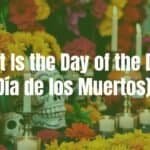



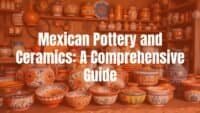

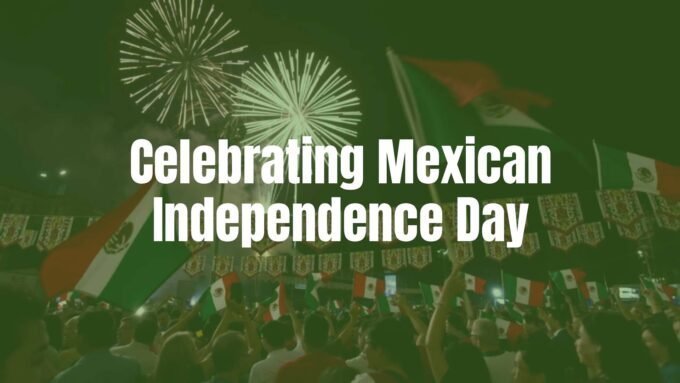
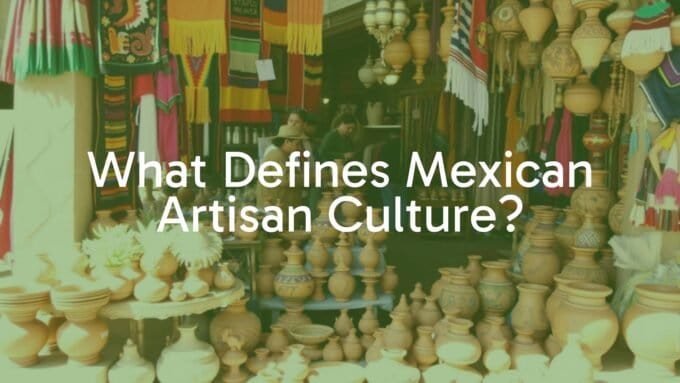
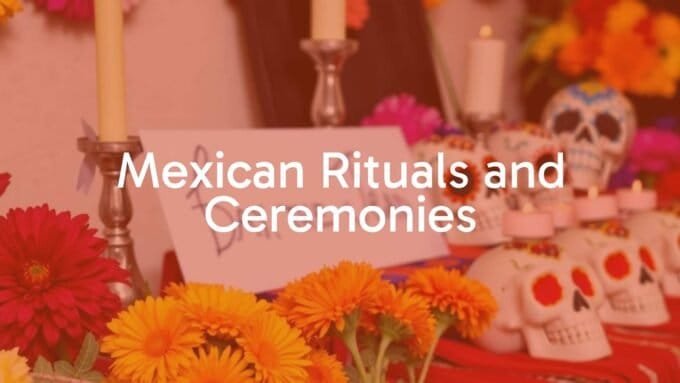



Leave a comment